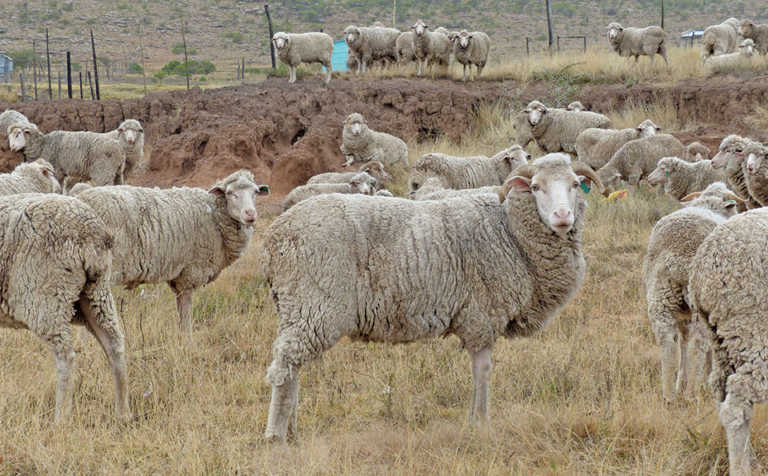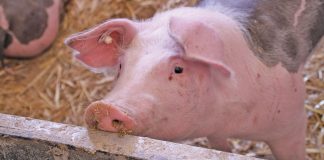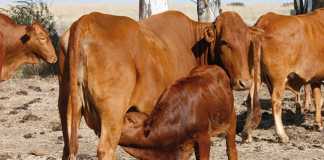
Photo: FW Archive
Internal parasites such as milk tapeworm (Moniezia expansa) can prove problematic
in young lambs, while adults can fall prey to wireworm (Haemonchus contortus).
The latter are bloodsuckers that can cause death due to anaemia from severe internal blood loss. Animals carrying heavy worm loads can also develop immunity disorders, making them vulnerable to opportunistic diseases.
Animals left untreated for lengthy periods can become ‘reservoirs’ for parasites, and will keep reinfecting healthy animals on communal rangelands.
Sickly or parasite-infested animals become unproductive and give birth to weak offspring; they also struggle to feed their young. Wool sheep may produce low-quality wool.
While some animals can develop some immunity against diseases and parasites and remain functional, others are continually afflicted. These should be culled.
Symptoms
Signs of worm infestation include:
- Bottle jaw, a swelling that develops under the lower jaw;
- Ascites, a condition where the abdomen appears swollen;
- Coughing and laboured breathing;
- Diarrhoea, often mixed with blood;
- In lambs, a swollen belly on a thin body. This may be a sign of severe milk tapeworm infestation;
- A pale or white, rather than pink, inner eyelid. This may be a sign of anaemia.
Management protocols
The village farmers’ association should consider introducing the following management protocols:
- When buying new livestock, request proof of the health status of the animals;
- Hold animal health workshops where farmers are taught what to look for when buying new livestock. This should include signs of parasite infestation;
- Create a quarantine area where all new animals can be placed on arrival. Experts should then inspect the new animals for signs of parasites, both internal and external, and administer a mandatory vaccination booster injection, dip the animals, and dose them accordingly. Treat sickly animals with antibiotics and monitor them for recovery.
If you quarantine the animals for 10 days or so, worm loads will be expelled into this area rather than into the rangelands. Change the quarantine area every two months and keep all animals off the old quarantine area for 30 days; this will allow parasites in the area to die off. - Collect dung (the fresher, the better) from at least three sheep owned by five owners. Keep each sample in a separate packet. Send the samples to the state vet for a faecal egg test; this will indicate the specific type of parasites and the levels of infection you’re dealing with. Once you know this, buy a drench dose or even an injectable remedy. If only a few sheep show signs of infection in a community, treat only these. If more than three in every 10 sheep (about 30%) show signs of infection, treat all livestock.
- Treat all animals for external and internal parasites at the change of the seasons or when outbreaks become clearly visible. However, don’t dose animals too often (monthly is too much), as this can create parasite resistance and even toxicity problems.
- Vaccinate young lambs with a broad-spectrum vaccination (obtain advice on the best brands) at about six weeks of age, then deworm.
- Change anti-parasite remedies every two years to prevent resistance from forming.
Simultaneous treatment
Treat all village animals at the same time by using the same doses or injectable treatments. If you leave even a few animals untreated, reinfection will be swift, and dosing will need to be undertaken more often.












